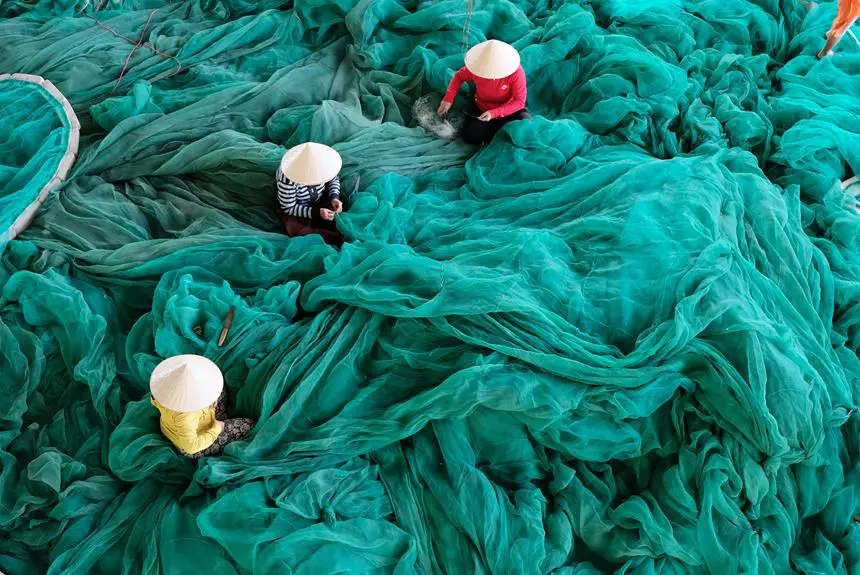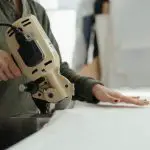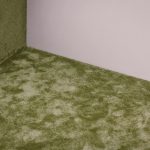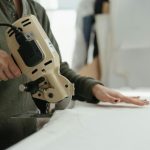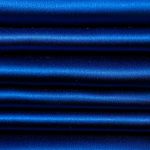When you're ready to cut fabric for your applique work, it's crucial to start with the right materials and tools. You'll want sharp scissors or a rotary cutter for clean edges, and preparing your fabric by pre-washing and ironing can make a significant difference. As you navigate curves and corners, patience is key to achieving precision. However, there's more to consider than just the basics of cutting—certain techniques can elevate your work in ways you might not expect. What might those techniques be, and how can they change your final outcome?
Table of Contents
Key Takeaways
- Pre-wash and iron fabric to ensure it is clean and smooth for accurate cutting.
- Use sharp fabric scissors or a rotary cutter for precise and clean cuts on various shapes.
- Create templates from durable materials to maintain consistency in your design shapes.
- Hold fabric taut while cutting and pin layers together to prevent shifting for accurate results.
Choosing the Right Fabric
When choosing fabric for your applique work, focus on materials that blend well with your project's theme and texture. Think about the overall aesthetic you want to achieve. If you're going for a vintage vibe, consider using soft cottons or florals. For a modern look, opt for bold colors or geometric patterns.
Next, consider the weight of the fabric. Lightweight fabrics, like cotton lawn, are great for detailed work, while heavier fabrics, such as denim, provide structure and durability. You want your fabric to hold its shape without being too stiff or difficult to work with.
Don't forget about the colors and patterns. Choose fabrics that complement each other and create a harmonious look. If you're unsure, use a color wheel to guide your choices.
Also, think about texture; combining different textures can add depth and interest to your design.
Essential Cutting Tools
Having chosen the right fabric for your applique work, it's time to gather the cutting tools that will help you achieve clean and precise shapes. First on your list should be a sharp pair of fabric scissors. A good pair allows for smooth cuts and prevents fraying. If you're working with intricate designs, consider investing in a pair of detail scissors or snips; they make it easier to cut around curves and corners.
Next, a rotary cutter is a fantastic option for larger pieces or straight cuts. Pair it with a self-healing cutting mat to protect your surfaces and keep your blades sharp. Don't forget a clear ruler for measuring and guiding your cuts—this will help you maintain accuracy.
A fabric marking tool is also essential for outlining your shapes before cutting, ensuring you follow your design closely. Finally, a pair of tweezers can assist you in picking up small fabric pieces or adjusting your cut shapes.
With these essential cutting tools, you're well-equipped to start your applique project with confidence and precision.
Preparing Your Fabric
To get started with your applique project, you'll want to focus on preparing your fabric effectively.
This means choosing the right fabric, pre-washing and ironing it, and using the right cutting techniques and tools.
Choosing the Right Fabric
Choosing the right fabric is essential for successful applique work, as it impacts both the design's appearance and durability. When selecting fabric, you'll want to consider a few key factors to ensure your project stands out.
- Fabric Weight: Choose a medium-weight fabric that's easy to handle. Too light, and it may fray; too heavy, and it can be challenging to sew.
- Texture: Opt for fabrics with a smooth texture like cotton or cotton blends. Textured fabrics can complicate the cutting and stitching process, often leading to uneven edges.
- Color and Pattern: Think about the colors and patterns in your design. Solid colors can create a striking contrast, while prints can add depth and interest. Match the fabric to your overall theme for the best results.
- Washability: Select fabrics that can withstand washing if your finished piece will be used or displayed. This ensures your design remains vibrant and intact over time.
Pre-Washing and Ironing
Before cutting your fabric for applique work, it's important to pre-wash and iron it to ensure your pieces are clean and ready for precise cutting. Pre-washing removes any dirt, dust, or chemicals that may be on the fabric from manufacturing or storage. This step helps prevent excess dye from bleeding during future washing and ensures your colors stay vibrant.
To pre-wash, simply toss your fabric into the washing machine with a mild detergent. Use cold water to avoid shrinking and fading. Once the cycle is complete, dry your fabric according to the care instructions—air drying is often best, but if you prefer, you can tumble dry on low heat.
After washing, it's time to iron your fabric. Ironing smooths out wrinkles, making it easier to cut accurately. Set your iron to the appropriate temperature for your fabric type, and press gently to avoid scorching. If your fabric has a lot of creases, consider using steam to help relax the fibers.
Once your fabric is clean and pressed, you're all set to begin cutting for your applique project!
Cutting Techniques and Tools
Having your fabric prepped and pressed, you can now explore various cutting techniques and tools that will help you achieve clean, precise shapes for your applique work.
The right methods and equipment make a significant difference in your project's outcome. Here are some essential cutting techniques and tools to consider:
- Rotary Cutter: This tool offers smooth, straight cuts and is perfect for cutting multiple layers of fabric at once. Use a cutting mat to protect your surfaces.
- Fabric Scissors: Invest in a good pair of fabric scissors for detail work. They provide the control needed for intricate designs and curves.
- Template Method: Create templates from cardstock or plastic for consistent shapes. Trace around your template before cutting for accuracy.
- Fusible Webbing: If you're working with delicate fabrics, using fusible webbing can help stabilize them. Cut your fabric pieces with the webbing attached for easier handling.
Techniques for Accurate Cutting
Accurate cutting is essential for achieving clean edges and ensuring your applique pieces fit together seamlessly. To get started, always use sharp scissors or a rotary cutter. Dull blades can snag fabric, leading to uneven edges. When cutting, hold the fabric taut to prevent shifting. If you're working with multiple layers, pin them together securely.
Next, consider using a cutting mat to protect your surfaces and to provide a grid for measuring. This will help you maintain straight lines and accurate dimensions. If you're cutting curves, move your fabric, not your scissors, to maintain control over the cut.
Also, take your time when aligning your ruler or template with the fabric edge. A little extra patience goes a long way in preventing mistakes. If your design has intricate shapes, it might help to cut sections separately. This can simplify the process and enhance precision.
Creating Templates for Applique
When you're creating templates for your applique, the materials you choose can make a big difference.
You'll want to think about how to design your shapes to ensure they align with your project.
Let's explore the best options for template materials and effective design techniques.
Choosing Template Materials
Choosing the right materials for your templates can make a significant difference in the ease and precision of your applique work. When you're creating templates, consider the following materials to ensure your project runs smoothly:
- Cardstock: This sturdy paper is easy to cut and provides durability for repeated use. It's great for simple shapes and won't bend easily.
- Plastic Sheets: Lightweight yet strong, plastic templates can be used multiple times without losing their shape. They're also transparent, making it easier to position them over your fabric.
- Template Plastic: Specifically designed for crafting, this material offers a perfect balance of flexibility and sturdiness. You can easily trace and cut intricate designs with it, and it holds up well over time.
- Felt: If you're looking for a softer option, felt can be an excellent choice. It's easy to cut and won't fray, making it ideal for one-off templates.
Designing Your Shapes
To create stunning applique designs, start by sketching your shapes on paper to visualize how they'll look when completed. Consider the size and proportions of each shape, as these will significantly impact the overall design. You can use simple geometric shapes or more intricate motifs, depending on your skill level and creativity.
Once you've sketched your ideas, refine them. Make sure the lines are clear and distinct, as this will help when creating your templates. If you're unsure about your design, try drawing it multiple times or experimenting with different layouts.
Next, transfer your sketch onto template material. You might use cardboard, plastic, or even freezer paper—whatever suits your project best. Cut out each shape carefully, ensuring the edges are smooth. These templates will serve as the foundation for your fabric pieces, so precision is key.
After cutting your templates, double-check their proportions by laying them out on your chosen fabric. Adjust as needed, and remember to account for seam allowances if you're layering multiple pieces.
Happy designing!
Handling Curves and Corners
Mastering the technique of cutting curves and corners ensures your applique pieces fit together seamlessly and look polished. When you're working with intricate shapes, it's crucial to pay attention to how you handle those curves and corners. Here are some tips to make the process easier:
- Use Sharp Scissors: Invest in a good pair of fabric scissors. They'll make clean cuts, especially around tight corners and curves.
- Clip Corners: Before turning your fabric pieces right side out, clip the corners close to the stitching line. This reduces bulk and allows for sharper points.
- Cut in Small Increments: For curves, cut small notches along the seam allowance. This helps the fabric lay flatter and follow the curve more naturally.
- Practice Patience: Don't rush through cutting. Take your time to ensure each curve and corner is shaped accurately. It makes a significant difference in the final look of your work.
Tips for Clean Edges
Achieving clean edges in your applique work is essential for a professional appearance and can be accomplished with a few simple techniques. First, always use sharp scissors or a rotary cutter to ensure precise cuts. Dull blades can lead to frayed edges, compromising your design's quality.
Next, consider using a stabilizer. This extra layer supports the fabric, preventing distortion during cutting or stitching. You can also try the following tips to enhance your results:
| Technique | Description |
|---|---|
| Double Layer Cutting | Cut through two layers of fabric at once for uniformity. |
| Pinning | Secure your fabric layers with pins to prevent shifting. |
| Scalloped Edging | Use scalloped scissors for decorative edges that still stay neat. |
Lastly, practice your cutting technique on scrap fabric before working on your final piece. With these strategies, you'll create clean edges that elevate your applique projects. Remember, attention to detail not only improves the look of your work but also boosts your confidence as a crafter.
Frequently Asked Questions
Can I Use Recycled Fabric for Applique Projects?
Absolutely, you can use recycled fabric for applique projects! It adds uniqueness and character to your work. Just ensure the fabric's clean and in good condition, so your creations turn out beautifully. Enjoy being eco-friendly!
How Do I Store Leftover Fabric Scraps?
To store leftover fabric scraps, you can organize them by size or color in clear bins or envelopes. Label each container, so you'll find what you need easily when you're ready to create something new.
What Is the Best Way to Transfer Designs Onto Fabric?
To transfer designs onto fabric, you can use carbon paper, fabric markers, or transfer sheets. Just place your design underneath, trace it, or iron it on. Make sure to choose the method that suits your project best!
How Do I Fix Mistakes When Cutting Fabric?
When you make a mistake cutting fabric, don't panic. Assess the error, and if possible, trim away excess fabric or patch it. You can also creatively incorporate the mistake into your design for a unique touch.
Can I Use a Rotary Cutter for All Fabric Types?
You can use a rotary cutter for many fabric types, but it's best for woven fabrics. For delicate or stretchy materials, consider using scissors to avoid fraying or distortion. Always test a small piece first.
- Does Chiffon Fabric Stink - July 15, 2025
- Does Chiffon Fabric Affect the Economy - July 15, 2025
- Does Cotton Fabric Have a Nap - July 15, 2025

